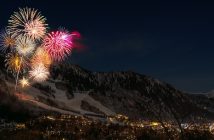It had been snowing for two days. It started on Sunday afternoon – a painfully raw day. Large flakes blew in from the east but melted when they made contact with something solid, as they usually do in this country. But by nightfall the snow was layering. I only realised this because I noticed it was curiously light outside. I stepped to the kitchen window and saw, with childlike astonishment, that everything was covered in white like a fairytale of a winter world. Something leapt in me, a bubble of excitement burst; snow was rare in this country now, at least in the south, and there was something inescapably magical about it: its sudden appearances, where it came from, the individual beauty of the flakes, and its ability, when falling in abundance, to completely transform a landscape. The soft radiance I had seen at the window was the night light – from sky and houses and street lamps – reflected off this caressing blanket of white. It was like a full moon-lit night, only much, much more beautiful. It was utterly captivating.
In the morning I could sense a communal throb of excitement. Children’s joyful cries echoed through the streets. For once, going to school was a pleasure not a drudgery. There was even a murmur of pleasure from the adults as they crunched along the pavements – tottering like pregnant women – or shovelled clear their paths. Later I smiled as I saw the builders working on the house opposite shriek and roar in the midst of a snowball fight. It was amazing that this natural phenomenon – like bright sun on a spring day – brought out the inner child in everyone, a delight, a curiosity, a happiness.
In the afternoon I cycled to the pool. I was not going to miss the experience of swimming as the snow came down. I was struck by how completely different the city now looked. I had never seen such a heavy covering of snow in London. Even 18 years ago tobogganing on Parliament Hill, I’m sure it was not as thick and decisive as this. It was a Dickensian London once again, with snow heaped in the gutters, and black-swaddled figures labouring toward their destinations. It was impossible not to look at the city with new eyes, eyes of amazement, eyes of a child.
On my road, and most of the smaller roads, the snow was impacted and slippery and my bike careered dangerously; I got off and pushed. On the busier roads the snow had been churned to a filthy slush and riding was possible but precarious. Within five minutes of being in the saddle, however, the seat of my trousers and everything below the knee was ringing wet with dissolved snow and grit. This was a new and learning experience.
Highbury New Park was extraordinary. The avenue of plane trees which lined the road and met overhead in an arch were each, bough by bough, branch by branch and twig by twig, sugared on the topside by a layer of exquisite snow, which set off, like painted highlights, the swirling striations of the ghost-like trunks. It felt as though I was progressing along a carriageway in nineteenth-century Vienna.
There were further hazards to be met. Snowballers. I had met my first pair early on – angelic-looking seven-year-olds grinning and flourishing fist-sized balls of snow as I whirled past in an unsteady manner. I had always had fairly firm views on snowball fighting, namely that it was fun and acceptable amongst friends, but that an icy projectile hurled from a stranger was a step over the mark, bordering on an affront. It was a tricky area though; to get angry at such an incident was somehow unduly curmudgeonly and a touch unmanly, yet to let it pass seemed cowardly.
With these thoughts in my mind, I rode past my pint-sized interlopers who fortunately did not see fit to carry through their threats. Further on, though, at my turnoff on Highbury New Park, I sailed directly into a fire fight of that most dangerous and vindictive breed – the city estate teenager. Snowballs arced overhead. I heard a guttural voice shout, “Get the man with the beard!” It was strange to hear myself thus addressed, subjectively and in the third person, and it took a moment or two to realise that they were referring to me, but by then it was too late – for them – as I cycled languorously out of the danger zone.
I wheeled my bike the final hundred yards on the road leading up to the pool, as it was covered in a disc of hard, treacherous ice. Inside the pool courtyard, mist from the pregnant air descended and mingled with the steam rising from the warmed waters, creating the miasmic fog of a Jurassic swamp. Heavily muffled lifeguards waded through the gloom in slow motion, like slips of no substance. In the grey, churning waters, sound struck the ears before objects touched the retinas, as figures loomed out of the gloom as though they were swimming in mid-air.
I sloshed through the waters in this featureless space as the liquid embraced my front and legs, the chill air cooled my back and the falling snow peppered my skin. As my head turned for breath, left and right, I caught sight of flashes of scampering ankle through the haze and folds of white snow lining every surface.
When I emerged, night had fallen. London Fields was a sight. London’s old duelling ground, which usually in darkness became an impenetrable, foreboding gulf, was bright with reflected snow and thronged with excited figures like an old Breugel painting. Giant snowballs, the size of hay bales and larger, had appeared mysteriously, singly and in large clusters, dropped by alien hands. I was struck by how solid and imposing these forms were, as I was to feel again in Clissold Park when encountering the same phenomenon, and how a curious atavistic impulse had unthinkingly driven hands to fashion such simple and universally affecting shapes, just as a similar impulse had led to the creation of Stonehenge.
The falling snow fluttered past the orange glow of the street lamps as I turned and led my bike away, and I thought that at night this virgin landscape was even more magical and beautiful than when revealed by the crisp rays of the sun.
I returned home. Snow covered the top of the hedge, bonnets of cars, the rooftops. I trod up to the front door, leaving a trail of deep footprints, and I was conscious that my neighbours would see my passing when they returned. And the thought occurred to me that snow reveals as much as it conceals, enabling you to see the world with fresh eyes, if you allow it.
Written and illustrated by Harry Chapman.





4 Comments
What a captivating, wonderful piece and such marvellous illustrations. My only quibble was with the notion that it no longer snows in “the South” in this country. We have “enjoyed” three years of deep and heavy snow in rural Buckinghamshire, which I happen to know is no more than 46 miles from the author’s location.
Ah, quite right Sir, we do seem to be entering into a new Ice Age, although, as you yourself point out, this is a fairly recent phenomenon. Most of my growing up in the South has been done in Winters of a rather mild, muggy type. Bring back skating on frozen heath ponds, I say, and hog roasting on the Thames!
How delightful to read about snow in my homeland. My father’s name was also “Harry”, he was a signwriter. So my interest is not only that you are my father’s namesake but also an artist! Yes, I am following the family tree and “no” I do not think we are related, because “Chapman” is almost as common as Smith. Snow in the surrounds of London, when I was a child, snow was just a skittering on top of grass. I did not comprehend “snow” until my first winter in Canada when a trip to the movies created a snow storm while we were there and when we exited more than a foot had fallen. Due to my father’s vehicle being an aging Model A ford, the high large wheels allowed us to navigated the road home without much difficulty. I like to paint snow but was told by one gallery curator that “people don’t like snow”. I continue to paint it, even winning a prize for a small watercolour of “first snow”. I find it hard to comprehend that England has much snow now! Times change, weather changes. Keepwriting your delightful essays, and adding illustrations. It’s a jopy to know there are other artistic Chapmans!
Dear June, thank you for your kind words! There is something incurably magical about snow and it continues to exert an imaginative hold over me. There’s nothing like a Winter walk in the snow. In relation to my name, I believe my association with the Chapman clan only goes back two hundred years. During the Napoleonic Wars a relation of mine drew his sword and defended himself against an armed press gang determined to take him for the Kings’ service. He killed the commanding officer and, so the story goes, fled to the Continent where he changed his name. He left a “Mayo” and returned a “Chapman” so I suppose I have only a tenuous right to the name. Still, I was born a Chapman, and unless circumstance conspires to change this, I will die one too!